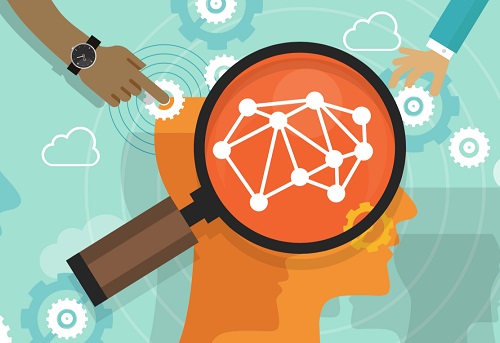By Kelly Bliss
Take a look around—at the grocery store you frequent, in the car next to you on the freeway, at your clients’ offices, and, perhaps, even in the mirror—and you’ll likely see individuals who are among the 300 million people afflicted with depression and other mental health conditions that are often never diagnosed. They face a daily struggle to cope with problems that interfere with and limit harmony in both work and home life.
While many of your employer groups are finding ways to address the topic of mental health in the workplace, they often struggle to start the dialog and build a strategy that works in their environment, for their population.
To be a valued resource to your clients, benefits brokers who understand the data related to employee mental health can be even more effective in their recommendations to help employers meet the mental healthcare needs of employees. And there’s a lot to know beyond the facts and figures. Behind the data are real people with real issues who struggle in their work lives as well as their day-to-day living situations.
Consider some interesting facts that were uncovered after a Teladoc Health-sponsored Ipsos MORI study focused on the mental health opinions of nearly 4,000 employees around the world. We distilled the results into four important areas that may help you understand how to grapple with a subject as intimidating as mental health.
- Mental health challenges in the workplace typically hit young workers hardest. Young workers, including millennials, are changing how work gets done—seeking flexible work days and an environment that is more suitable to their style of work. This new way of working, however, comes at a cost. Workers ages 18-25 appear to face more mental health challenges than other age groups.
A large percentage of 18-25 year-olds say they feel burned out by work and deal with stress and anxiety frequently because of their mental and emotional health. In fact, 38% of respondents in this age group said they had been diagnosed with a mental health problem compared to all respondents in this study.
The most candid group in discussing their mental health—younger workers—also quickly admit that they miss work because of their mental and emotional health. Two thirds (66%) of workers aged 18-25 have missed work, compared to less than half (44%) of all age groups in the study. And, 61% of younger workers report that mental health symptoms have affected their job performance.
In this study, just 58% of respondents said they feel knowledgeable about how to improve their mental health. Given this gap, employers can help employees by offering access to more mental health help and resources to all workers. One solution that naturally resonates with younger workers is the idea of remote care and other health-related tools. A September 2019 CNBC report suggests younger workers don’t hesitate to go online to seek help. Mental health providers agree that the demand for remote care has grown. One mental health therapist, Goali Saedi Bocci, Ph.D., from Portland, Oregon, says she treats 100% of her patients online and views online care as private, convenient and comfortable for both the therapist and client.
- The stigma of needing mental health support keeps many from seeking help.
Employees from around the world indicate that stigma plays a huge role in what they don’t say about their mental health needs at work.
The study shows 82% of employees diagnosed with a mental health problem don’t confide in anyone at work about their issue. And while some workers may elect to confide in a colleague, 27% of respondents said it’s inappropriate to discuss mental health issues at work. Many employees also feel their capabilities at work would be questioned if they talked freely about their mental health struggles.
Most troubling, though, is that 55% of respondents said the big reason for not telling a work colleague about their mental health problem stems from fear of the information negatively impacting their job. One in 10 respondents said they felt confiding in someone at work about their mental health challenge could result in job loss.
As a trusted consultant to organizational leaders and human resource teams, brokers can cite these statistics as valid reasons to help their employer groups create a stigma-free work environment. Setting the stage so employees are free to ask for and get the care they need will help ensure that employees will use mental health benefits provided.
3: Get involved. Be visible. Talk about mental health.
It’s human nature for us to avoid difficult issues. Instead of speaking up or taking action, we avoid situations that make us uncomfortable. But to be successful, senior leaders and people managers can’t afford to ignore the situation. Our study shows employees will be more comfortable discussing mental health challenges when they see and hear their leaders talking about mental health in the workplace.
Without question, it’s up to employers to take workplace mental health seriously. Kudos to those that have already implemented programs to help employees. But more needs to happen—57% of respondents in our study think more should be done in their workplace to improve mental health.
When leaders begin to openly discuss mental health at work, employees gain confidence in asking for the help they need. Providing this sort of advice is usually outside the norm for most brokers in their relationships with business owners. Those who do attack the mental health stigma in the workplace head on may find themselves at an advantage for attempting to understand and resolve real workplace challenges.
- Improve mental health in the workplace with access to information and support.
Remember when employers implemented mental health days into the benefits package? At the time, it may have seemed like a stretch to give workers a mental health day. Fortunately, when employees make use of this benefit it makes a huge difference in their ability to self-manage their mental health.
Of respondents in the study who experienced a mental health challenge in the past and received support, the most useful employer-provided solutions were:
– Adequate time off work (80%)
– Adjustments to work hours and setting (79%)
– A temporary reduction in workload (77%)
– Being offered specific information about their own difficulties and needs (70%)
In our study, just one-third of respondents said they believe mental health benefits at work get the same level of importance as those for physical health. And 33% said they would be more productive at work if there was better mental health support. There is indeed room for employer groups to enhance mental and emotional health resources. Access to mental health assistance using a remote solution is one offering that makes perfect sense given the use of technology in our daily lives.
It’s vital for employers to offer the right resources and support. Nearly half of those who perceived mental health stigma in the workplace chose a remote form of access to information and support as a way to break through the stigma. When employees have access to the right tools, including remote support like virtual behavioral health, the negative impact mental health problems have in the workplace can be diminished.
While we’ve come a long way this century, we still have a mountain to climb to meet employee mental health needs at work. Once we break the stigma associated with mental health, employers will be able to make inroads in helping employees with their challenges.
Scope and methodology
In August and September 2019, Teladoc Health partnered with Ipsos MORI, a global market and opinion research firm. Ipsos interviewed 3,894 participants online. The study was carried out across four countries with n=1,000 interviewed in the United States, n=1,000 in the United Kingdom, n=964 in Canada, and n=930 in Australia. All participants were adults who are 18-65 years in age and in full- or part-time employment. Quotas based on census data available were set for age, gender and region in order to ensure a nationally representative sample of the working population in each country was achieved. Freelancer and self-employed adults were excluded in order to focus on workplace employees. The quota limits for regions in the United States and the United Kingdom were removed in the final week of the study so the overall target of n=1,000 in these countries was met.
Kelly Bliss, chief client officer, Teladoc Health, is responsible for the global client services strategies that drive client retention, fosters advocacy, and grows partner relationships for Teladoc Health. She has strong expertise in creating cohesive client-focused organizations, having built and managed high functioning, global teams at companies such as Best Doctors, InterSystems, and TRO-Design. At Best Doctors, she served as chief of staff, leading the organization’s key strategic growth initiatives, and was integral in the integration of Best Doctors with Teladoc Health. Bliss also managed U.S. operations including human resources, IT infrastructure, real estate, and account management. She holds a bachelor’s degree in industrial psychology from Nichols College.


